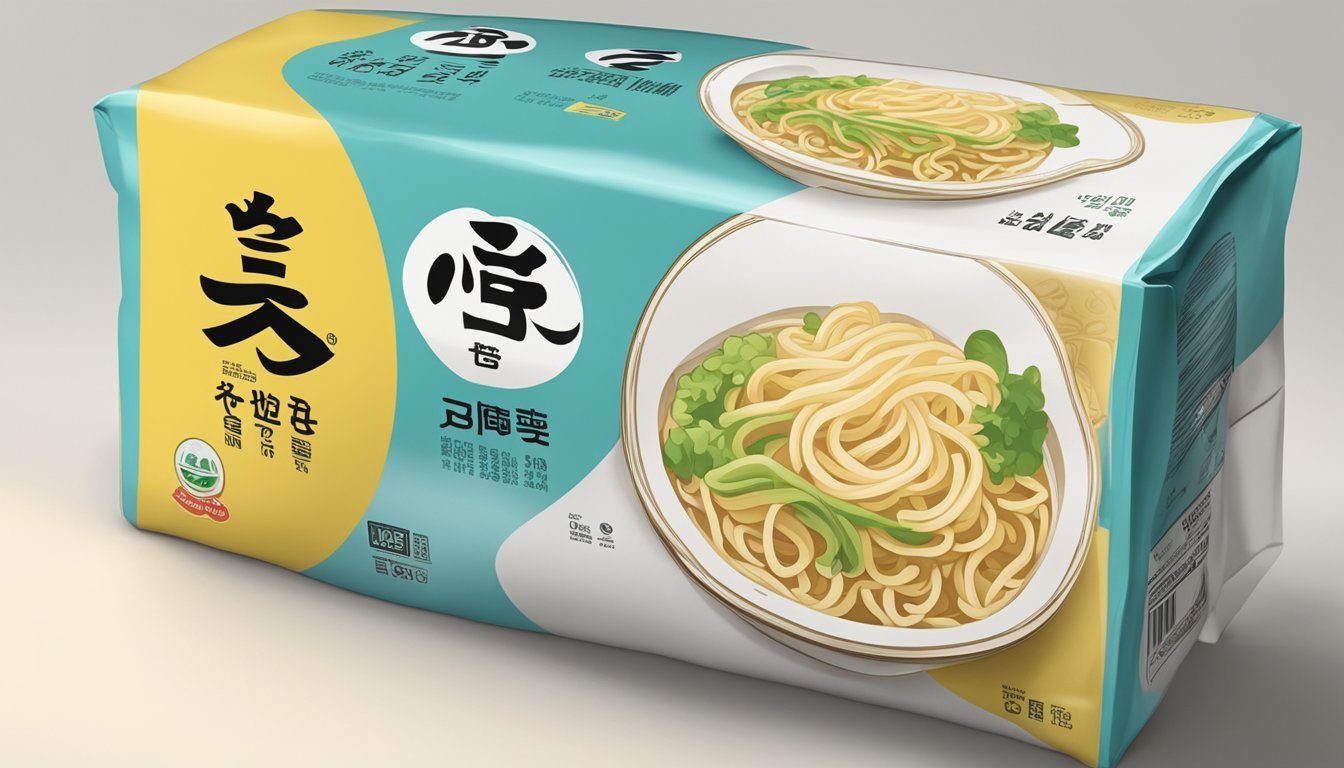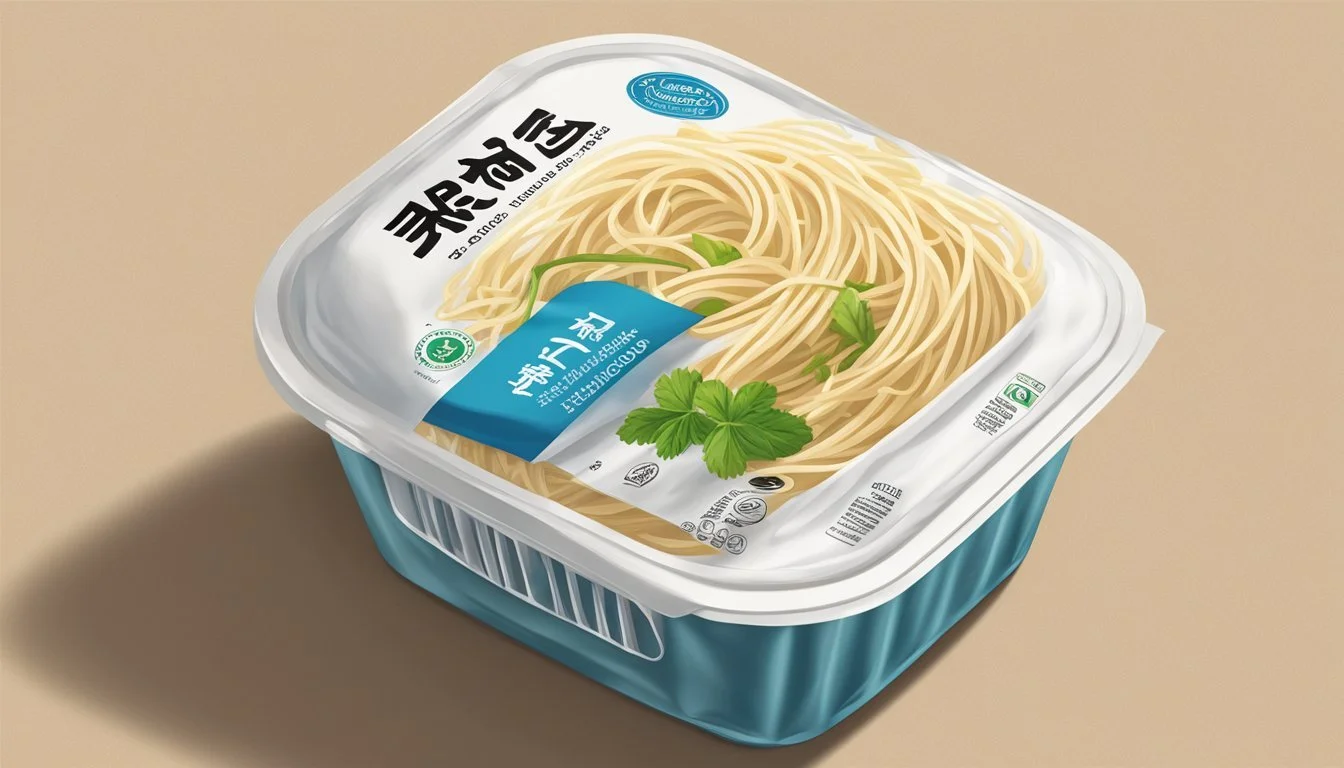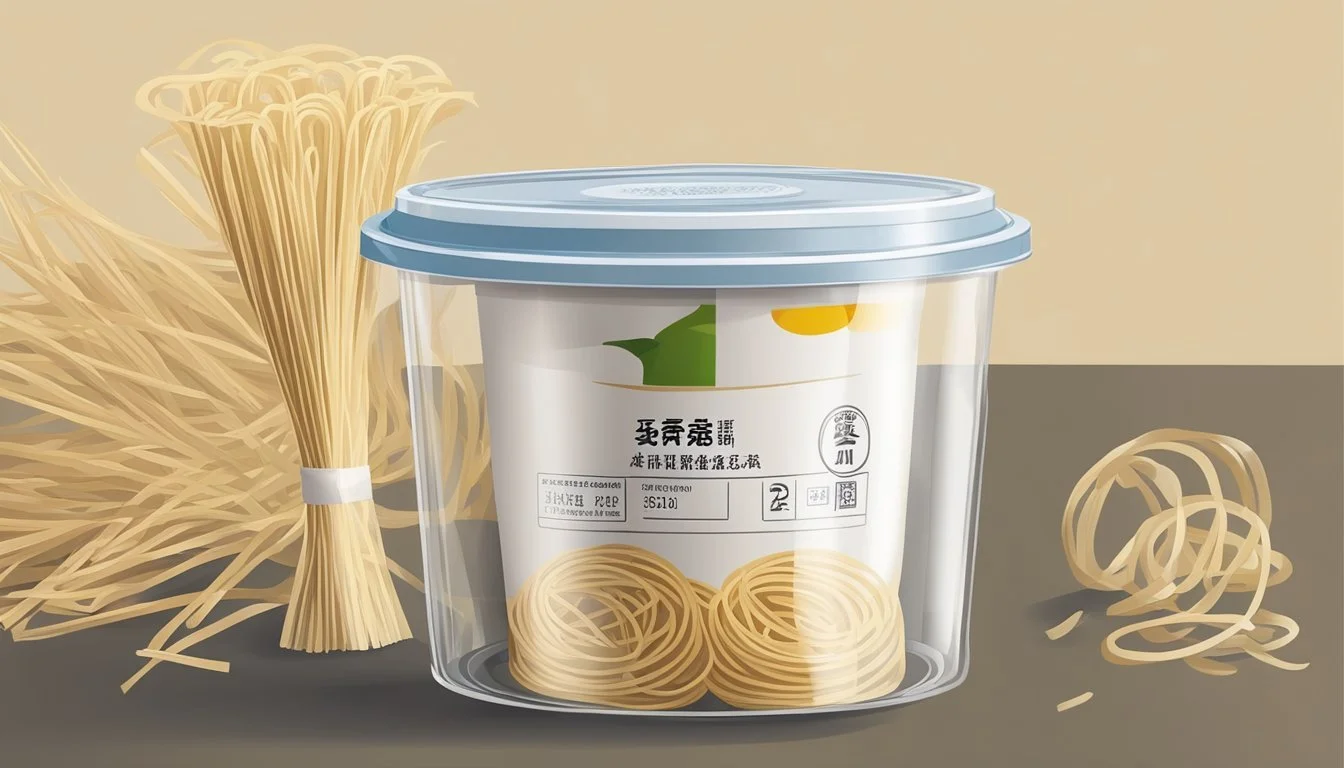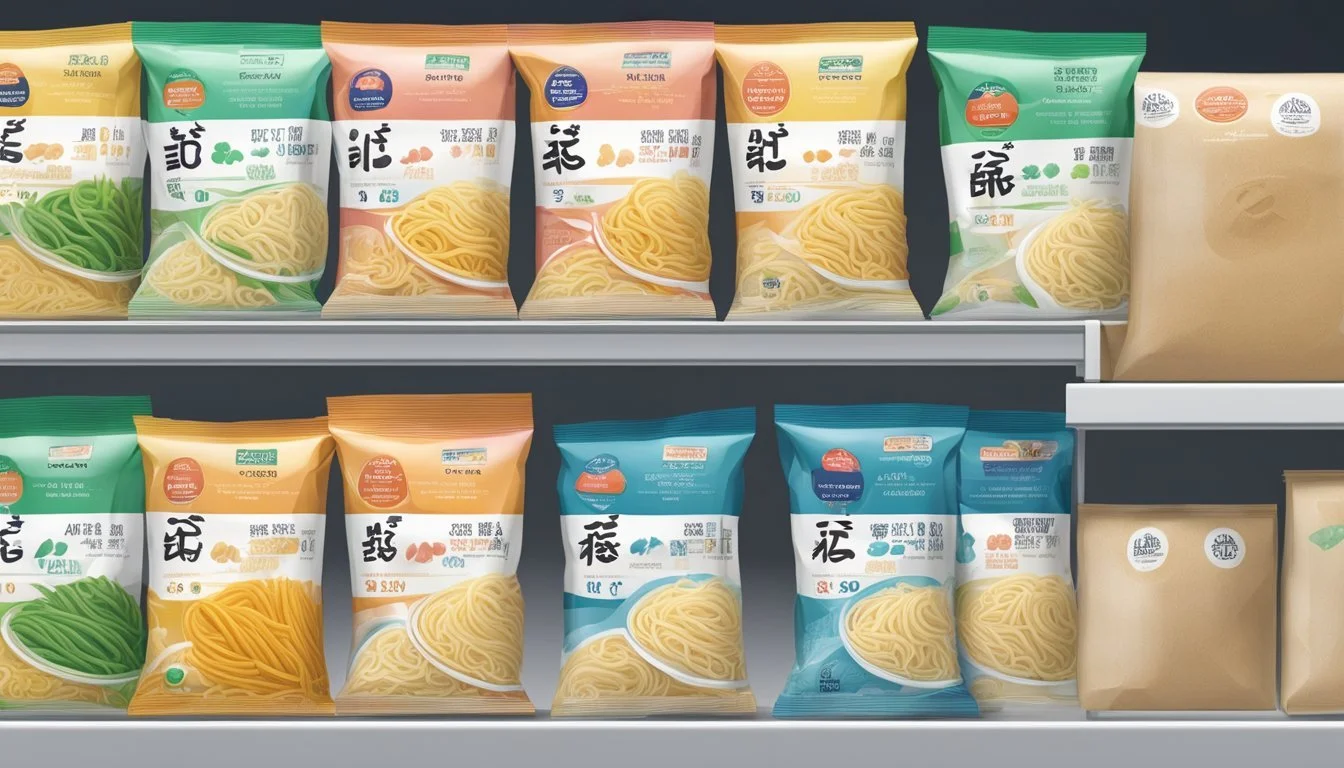How Long Do Somen Noodles Last?
Uncovering Shelf Life and Storage Tips
Somen noodles (how long do somen noodles last?) are a staple in Japanese cuisine, revered for their delicate and light texture. These thin, wheat-based noodles are traditionally eaten cold, especially during the warm summer months, but they are also enjoyable in hot broths. Preservation of somen noodles is relatively straightforward when uncooked. Given their dry state, they can last quite a long time when stored properly. Generally, their shelf life extends up to a year if kept away from moisture, which is the primary cause of spoilage for these dried noodles.
Determining how long somen noodles last depends on various factors, including the storage method and whether the noodles are fresh or dried. In packaged form, somen noodles typically come with a 'best by' date imprinted by the manufacturer. This date is a good guideline; however, with proper storage—kept in a dry, cool place and sealed in their original packaging or an airtight container—the noodles can be good for use beyond this date. It's important to inspect the noodles for signs of spoilage, like an off smell or a change in color, before cooking.
When it comes to cooked somen noodles, the timeframe in which they should be consumed is much shorter. After cooking, any leftovers should be refrigerated and are best consumed within two days to ensure both safety and quality. Reheating cooked somen noodles should be done with care, as their thin nature makes them delicate and prone to becoming mushy if overcooked.
Understanding Somen Noodles
In exploring Somen noodles, one discovers their unique position in Japanese cuisine, characterized by their thin profile and common use in cooling summer dishes.
Origins and Types
Somen noodles, known as sōmen in Japanese, hail from Japan with historical ties to China. There are two premium types, Tenobe somen and Ibonoito, both known for their artisanal quality. Somen are traditionally made from wheat flour, and are extremely thin, typically less than 1.3mm in diameter. Variations like hiyamugi are slightly thicker, while still thinner than udon noodles.
Nutrition and Health
A standard serving of somen provides a moderate calorie count, primarily from carbohydrates as they are made from wheat flour. Somen are low in fat and protein, and lack significant vitamins and minerals unless enriched. As they do not contain buckwheat flour (how long does buckwheat flour last?), they are not suitable for those with gluten intolerances. Nonetheless, for vegans and vegetarians, plain somen noodles made without eggs or animal products offer a simple, adaptable staple.
Culinary Uses
Somen noodles are prevalent in Japanese cuisine, served chilled as a refreshing summer dish or hot in soups. Chilled somen, typically referred to as cold noodles, are often accompanied by a light dipping sauce or tsuyu. Popular dishes involving somen include flavorful salads, nagashi somen (flowing noodles), and as a main course with various toppings.
Comparing Somen With Other Noodles
Somen are distinguished by their delicate and thin noodles, making them distinct from the thicker udon and darker soba noodles (how long do soba noodles last?), which contain buckwheat flour. Unlike soba, somen are purely wheat-based, leading to a softer texture and milder taste. In Japanese culinary practices, each type of noodle, including somen, fulfills a specific role, from hearty udon dishes to light, simple dishes like somen.
Proper Storage of Somen Noodles
Proper storage of somen noodles is crucial for maintaining their quality and longevity. By understanding the various storage methods and factors influencing their shelf life, consumers can ensure that their somen noodles remain fresh and safe for consumption.
Pantry Storage
Dried somen noodles should be kept in a cool, dry pantry away from direct sunlight. They are best stored in their original packaging until opened. If the packaging is not resealable, transferring the noodles to an airtight container can help prevent moisture and contaminants.
Refrigeration and Freezing
For extending freshness beyond the pantry, somen noodles can be refrigerated or frozen. In this case, they should be sealed tightly to prevent exposure to air and moisture. Refrigeration is suitable for fresh noodles, while freezing can preserve them for several months.
Signs of Spoilage
Consumers must be vigilant for signs of spoilage, such as a musty smell, discoloration, or the presence of mold. Eating spoiled noodles can cause nausea or diarrhea due to bacteria. If any of these signs are observed, the somen noodles should be discarded.
Shelf Life Factors
Several factors affect the shelf life of somen noodles, including their exposure to heat, light, and moisture. Dried noodles, made from water, salt, and flour by composition, have a longer shelf life than fresh varieties. The expiration date on the packaging can provide guidance, but the actual shelf life will depend on the storage conditions.
Preparing Somen Noodles
Somen noodles are a delicate Japanese noodle typically served chilled in the summer or hot in a broth, making them versatile for various dishes. The key to perfect somen noodles lies in the cooking technique and the selection of accompaniments and garnishes that enhance their flavor.
Cooking Techniques
To cook somen noodles, bring a large pot of boiling water to a boil without adding salt. Add the noodles and stir gently to prevent them from sticking together. The cook time for somen noodles is typically brief, around 1 to 1½ minutes. It's crucial to maintain a gentle boil and avoid overcooking to preserve their texture. Once cooked, drain and rinse the noodles under cold water immediately to stop the cooking process and keep them refreshing and firm to the bite.
Prep Time: ~5 minutes
Cook Time: ~1 to 1½ minutes
Total Time: ~6 to 6½ minutes
Accompaniments and Garnishes
Somen noodles are often accompanied by a dipping sauce called tsuyu, prepared with mirin, soy sauce, and dashi stock. Garnishes such as scallions, sesame seeds, grated ginger, or julienned cucumbers add texture and fresh flavors. Sliced shiitake mushrooms and shredded nori seaweed are other popular toppings, along with various condiments that can customize the taste to individual preferences.
Dipping Sauce (Tsuyu): Mirin, Soy Sauce, Dashi Stock
Garnishes: Scallions, Sesame Seeds, Grated Ginger, Julienned Cucumbers, Sliced Shiitake Mushrooms, Shredded Nori Seaweed
Recipe Ideas and Variations
Somen can be integrated into numerous recipes, from cold somen noodles to a hot dish called nyumen when served in warm broth. They are also excellent for vegan and vegetarian recipes, being a plant-based noodle without any animal products. Somen salads featuring a light dressing and various vegetables, or entwined with natto for an umami-rich experience, showcase their vermicelli-style versatility.
Cold Dishes: Somen Salads, Chilled Somen with Dipping Sauce
Hot Dishes: Nyumen, Somen in Dashi Stock
Seasonal and Cultural Significance
Somen noodles hold a special place in Japanese culture, particularly as a summer dish signifying refreshment during hot weather. The tradition of serving cold during the sweltering Japanese summer months is so prevalent that an event called nagashi somen has emerged, where noodles float down bamboo flumes and diners catch them with their chopsticks, enhancing the festive and seasonal experience associated with this dish.
Purchasing Guide
When looking for somen noodles, buyers should focus on the noodles' quality and available purchase locations to make an informed decision.
Selecting Quality Somen Noodles
To ensure purchasing high-quality somen noodles, buyers should inspect the packaging for any signs of damage which could affect the noodles' delicate texture. Quality somen noodles are traditionally very thin, about 1.3 to 1.6 millimeters in diameter, and should have a uniform, pale white color. It is important to verify the product's expiration date, as somen noodles typically can last up to 6 to 8 months.
Where to Buy
Somen noodles are widely available at various retail venues. Shoppers can find them at Japanese grocery stores, Asian grocery stores, and regular supermarkets within the international or Asian food aisle. Additionally, somen noodles are accessible online from food retailers or specialty Asian cuisine e-commerce sites. When shopping online or in stores, consumers should look for established brands to ensure product quality and authentic taste.
Health and Safety Considerations
When discussing the longevity of somen noodles, it's essential to address health and safety specifics, particularly regarding allergen content and appropriate handling measures to prevent foodborne illness.
Allergen Information
Somen noodles are traditionally made from wheat flour, which contains gluten—a common allergen. Individuals with celiac disease or gluten sensitivity should avoid consuming somen noodles unless they are explicitly labeled as gluten-free. Nutritional value is also linked to ingredients; somen noodles typically offer carbohydrates and small amounts of protein.
Safe Handling
The safe consumption of somen noodles involves proper storage and handling to avoid the growth of bacteria. Bacteria thrive in hot environments, so somen noodles should be stored in a cold, dry place to maintain their quality and safety. They can be safe past the expiration date, but one should always check for signs of spoilage such as discoloration or an off odor before consumption. When cooking somen noodles, they should be boiled in hot water to ensure that any potential bacteria are eradicated.
Cultural Context and Cuisine
Somen noodles have woven themselves into the fabric of Japanese culture, represented prominently in the nation's culinary traditions, especially as a refreshing summer dish.
Somen in Japanese Cooking
Somen noodles are a staple in Japanese cooking, characterized by their thin, vermicelli-like appearance. Made from wheat flour, somen boasts a pale white color and a delicate texture. In the context of Japanese cuisine, these noodles are often served cold, making them an ideal choice for the hot and humid Japanese summer. When served cold, somen is usually accompanied by a cool dipping sauce known as tsuyu, crafted from a blend of soy sauce, a dash of sweet mirin, and often includes a hint of dashi for umami.
In Japanese grocery stores, somen can be found as dried noodles, providing a simple and quick option for home cooking. Whether they are prepared hot or cold, somen noodles have the ability to absorb the flavors of their accompanying broths and sauces, serving as a versatile ingredient in many dishes.
Traditional Dishes and Celebrations
During festivals and seasonal celebrations, somen becomes more than just food—it's a part of the cultural experience. A renowned traditional dish is nyumen, where somen noodles are served hot in a flavorful broth. Similar to soba and udon, somen is enjoyed for its simplicity and the way it complements other components of a meal, whether it's a light summer dish or a more hearty soup in cooler months.
The practice of serving cold somen during warmer weather is linked with a desire to provide a refreshing and easily digestible meal. The noodles are typically garnished with thinly sliced green onions, strips of nori, and wasabi to taste. Other summer celebrations may feature nagashi-somen, an interactive dining experience where noodles flow down a bamboo chute with cold water and diners catch them with their chopsticks.
This emphasis on seasonal and festive dining illustrates the importance of somen within Japanese cuisine, highlighting its role in both everyday meals and special occasions.








